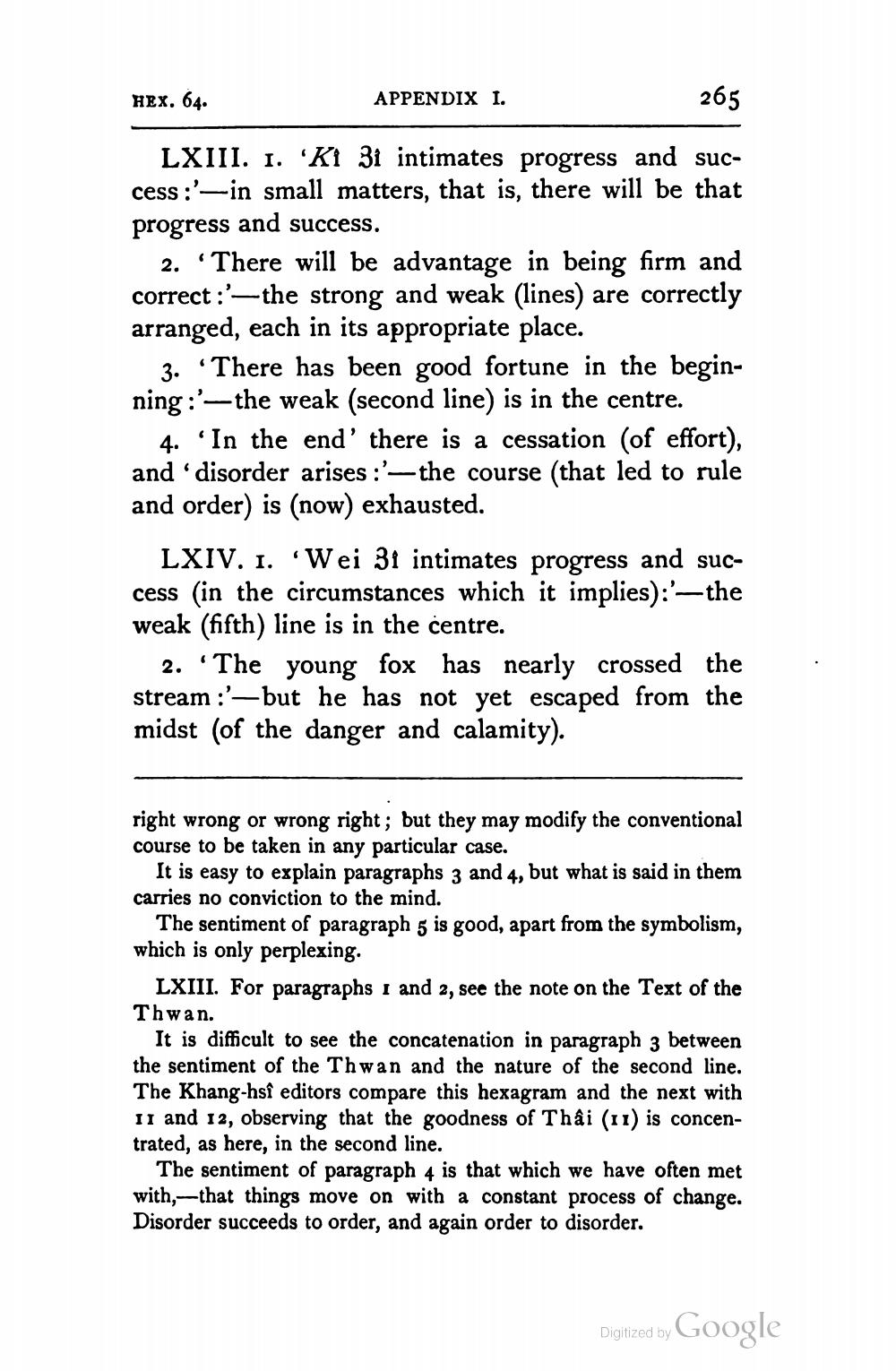________________
HEX. 64.
APPENDIX I.
265
LXIII. 1. 'K1 31 intimates progress and success :'-in small matters, that is, there will be that progress and success.
2. “There will be advantage in being firm and correct :'—the strong and weak (lines) are correctly arranged, each in its appropriate place.
3. “There has been good fortune in the beginning :'- the weak (second line) is in the centre.
4. 'In the end' there is a cessation (of effort), and 'disorder arises :'— the course (that led to rule and order) is (now) exhausted.
LXIV. 1. *Wei 31 intimates progress and success (in the circumstances which it implies):'—the weak (fifth) line is in the centre.
2. The young fox has nearly crossed the stream :'—but he has not yet escaped from the midst (of the danger and calamity).
right wrong or wrong right; but they may modify the conventional course to be taken in any particular case.
It is easy to explain paragraphs 3 and 4, but what is said in them carries no conviction to the mind.
The sentiment of paragraph 5 is good, apart from the symbolism, which is only perplexing.
LXIII. For paragraphs 1 and 2, see the note on the Text of the Thwan.
It is difficult to see the concatenation in paragraph 3 between the sentiment of the Thwan and the nature of the second line. The Khang-hsî editors compare this hexagram and the next with 11 and 12, observing that the goodness of Thâi (11) is concentrated, as here, in the second line.
The sentiment of paragraph 4 is that which we have often met with,--that things move on with a constant process of change. Disorder succeeds to order, and again order to disorder.
Digitized by Google
Digitized by




